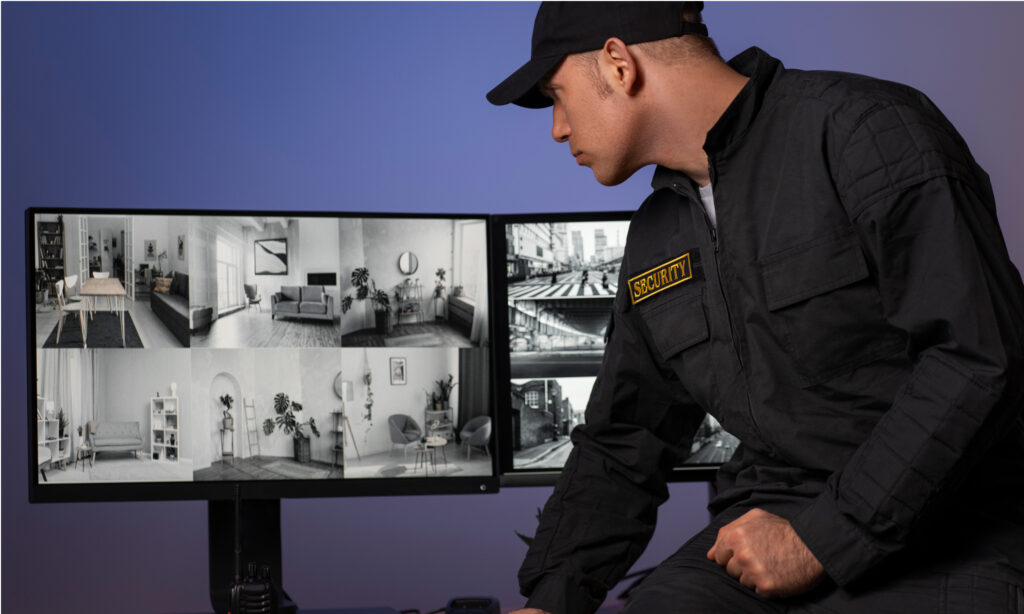Running a business with remote sites offers incredible opportunities—from expanding your reach to accessing diverse talent pools. However, managing operations across multiple locations also introduces new security challenges.
How do you protect valuable assets, data, and staff when your operations are spread across various sites?
In this blog, we’ll explore the unique challenges of remote site security and provide practical solutions to help businesses secure their remote locations. From geographical dispersion to cyber threats, understanding and addressing these risks is key to safeguarding your business.
The Challenges of Remote Site Security
Remote site security can be complex, requiring businesses to manage a variety of risks across multiple locations.
Let’s look at the most common challenges faced by businesses:
1. Geographical Dispersion
- Managing security across various remote locations can be logistically challenging.
- Physical distance between sites complicates regular audits, incident response, and maintaining consistent security measures.
2. Limited On-site Security Presence
- Many remote sites lack dedicated security personnel, making them more vulnerable to theft and unauthorised access.
- The absence of on-site security staff can slow response times to emergencies and reduce overall security monitoring.
3. Increased Cyber Threats
- Remote sites are often the target of cyberattacks due to reliance on technology and potential gaps in IT infrastructure.
- Without a centralised IT team, updating and maintaining security protocols can become difficult, leaving sites exposed to risks like malware and data breaches.
4. Data Security Concerns
- Safeguarding sensitive data across various sites, including customer information and financial records, is a significant challenge.
- The growing threat of data breaches and ransomware makes it vital to ensure the confidentiality and integrity of data.
5. Lack of Awareness and Training
- Employees at remote sites may not receive the same level of security training, leading to improper handling of sensitive information and increased susceptibility to phishing attacks.
Crafting a Comprehensive Remote Site Security Plan
Creating a robust remote site security plan requires a multi-layered approach that includes both physical and cybersecurity measures.
Here are the key elements of an effective security plan:
1. Physical Security
- Perimeter Security: Use fencing, lighting, and surveillance cameras to protect your site’s perimeter.
- Access Control: Implement strict access control, using key cards, biometrics, and video surveillance to monitor site entry points.
- Security Personnel: Ensure you have trained security personnel present at critical times to monitor activity and respond to incidents.
- Regular Inspections: Conduct frequent inspections to check for vulnerabilities and ensure security protocols are being followed.
2. Cybersecurity
- Strong Passwords & Multi-Factor Authentication: Enforce strong password policies and multi-factor authentication (MFA) for all users.
- Network Security: Use firewalls, VPNs, and intrusion detection systems to secure your remote site networks.
- Endpoint Security: Install endpoint security software on all devices to prevent malware infections and data breaches.
- Data Encryption: Encrypt data both at rest and in transit to protect sensitive information.
- Regular Updates & Patching: Ensure that software and systems are up-to-date with the latest security patches.
- Backup & Disaster Recovery: Maintain regular data backups and establish a disaster recovery plan to safeguard against data loss.
3. Employee Training and Awareness
- Security Awareness Training: Provide regular training to all employees on how to handle sensitive data, recognise phishing attacks, and report security incidents.
- Security Policies: Ensure that clear and comprehensive security policies are in place and accessible to all staff.
- Security Drills: Conduct periodic security drills to test the effectiveness of your security procedures and ensure staff are prepared for emergencies.
4. Ongoing Monitoring and Assessment
- Real-time Monitoring: Implement security monitoring tools to detect suspicious activity and respond quickly to potential threats.
- Vulnerability Assessments: Regularly assess security systems to identify and address any weaknesses.
- Penetration Testing: Use penetration testing to simulate real-world cyberattacks and uncover vulnerabilities that may be exploited.
5. Collaboration and Communication
- Centralised Security Team: Establish a central security team to oversee and coordinate security efforts across all remote sites.
- Clear Communication Channels: Set up efficient communication channels to facilitate rapid information sharing between remote sites and the central security team.
- Regular Reporting: Provide periodic reports on security incidents, vulnerabilities, and the actions taken to key stakeholders.
Conclusion
Ensuring robust remote site security is essential to protecting your business’s assets, data, and personnel.
By crafting a comprehensive plan that combines both physical and cybersecurity measures, businesses can mitigate risks and maintain a secure operation across multiple locations.
Accord Security offers tailored security solutions designed to meet the unique needs of remote sites. From on-site surveillance to advanced cybersecurity measures, we can help protect your business.Contact Accord Security today for a consultation.
Frequently Asked Question
Conduct a risk assessment for each site and consult a security professional to implement tailored solutions that address specific risks.
Develop a thorough training program that includes real-life scenarios, interactive sessions, and ongoing refresher courses. Ensure employees understand their role in maintaining security.
Use data encryption, restrict access to sensitive information, and implement regular backups to ensure data integrity across all sites.
Combine physical surveillance systems like cameras with cybersecurity tools such as network monitoring software to provide comprehensive coverage.
Establish clear incident response protocols, conduct regular drills, and ensure communication between the remote site and central security teams.
